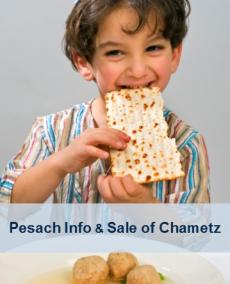Passover ain’t what it used to be! Time was, that the Passover selection in the kosher corner shop was limited to packets of ground almonds, potato flour, matzos, sugar and chrane.
Today, with globalisation and the increasing sophistication of food manufacture, the Passover superstores are piled high with every conceivable item including Passover cereals, Passover noodles and Passover pizza!
Ashkenazim beware, however! Increasingly there is a tiny warning, hidden away between the ingredients and the nutritional information “Containing kitniyot” or worse printed in Hebrew only “Rak l’ochlei kitniyot” (Only suitable for those who eat kitniyot!)
The hallowed tradition of Ashkenazim not to eat kitniyot (broadly beans and pulses) goes back at least a thousand years. The earliest explicit source is the halachic work SeMaK (Sefer Mitzvot Katan), by Rabbi Yitschak of Corbeil, son in law of the famous Tosafist Rabbi Yechiel of Paris. Writing in the 1200s he recalls the custom to refrain from such foods “Since the time of the early Chachamim and Rabbonim”.
The Vilna Gaon, however, suggests this custom existed even in Talmudic times. He refers to Pesachim 40b where Rava objected to the chefs of the Exilarch cooking “chasisi” on Pesach, which the Aruch translates as “lentils” (early kashrut supervision?)! Thus when Rabbi Yosef Karo, a Sephardi, in his Shulchan Aruch records that “matza and chametz can only come from the five grains – wheat, barley, oat, rye, and spelt - whereas rice and other kitniyot are acceptable”, Rabbi Moshe Isserlis, an Ashkenazi, immediately interpolates “however other authorities prohibit them and the Ashkenazi minhag is to be stringent and this should not be changed”.
The reason for this prohibition however is somewhat lost in the midst of antiquity. Amongst the many reasons suggested are:
i) Kitniyot grain is often grown adjacent to Chametz grain and the possibility of accidental mingling is high.
ii) Cooked products such as porridge are almost indistinguishable from their kitniyot counterparts.
iii) Kitniyot were often transported in the same sacks and baskets as chametz flour and were likely to have been contaminated.
iv) Wheat grown under poor agricultural conditions sometimes looks like certain kitniyot crops. Thus the Rabbis banned kitniyot to avoid confusion.
v) It is common to make flour from peas and beans which can easily be confused with chametz flour.
It is fascinating to note that a leaflet from the Flour Advisory Council entitled 'The History of Bread' seems to endorse this last reason recording “In addition to wheat and rye, bread was made from oats, barley, grass seeds and in times of shortage and famine, even peas and beans!”
Whatever the original reasons and their applicability today, the Aruch Hashulchan and other halachic authorities stress that the custom is sacred and must not be treated lightly. The Maharil, Rabbi Jacob Moellin of the 15th century, one of the most important sources of Ashkenazi custom, writes the one who eats kitniyot on Pesach is transgressing the biblical command of Lo Sassur, the obligation to follow the decisions of the Sages, and is deserving of death!
Nonetheless, there are in fact several important leniencies with regard to kitniyot. First of all one is allowed to own and derive benefit from them and keep them in the house on Pesach without concern that they may inadvertently be eaten. A sick person may eat kitniyot even if the illness is not life threatening. Thus our medicines list includes many products with ingredients of kitniyot origin. Furthermore if kitniyot becomes mixed into Pesach food, the mixture may be allowed (batel b’rov), whereas with real chametz the mixture would be forbidden.
It is interesting to note that even amongst the Sephardim, there are some who avoid kitniyot, and others who specifically refrain from eating rice.
The key question is what exactly is the definition of kitniyot? The word is commonly translated as legumes. According to the oxford Diuctionary a legume is a plant that has oits seeds contained within a pod. It is clear however that the halachic convention includes a far wider group. Maimonides cites rice, millet, peas and lentils as examples of kitniyot. Others add sesame seeds, mustard seeds, caraway seeds and of course peas. Maize, or corn, is a widely used grain discovered in the new world which whilst technically not legumes has become universally considered kitniyot, similarly the soya bean.
As new food products came within the ambit of Jewish cuisine, there was much debate in the halachic literature as to whether they might be considered kitniyot. Sunflower, rape, and peanuts (groundnuts) are amongst those where differences of opinion have arisen. Some communities avoid groundnut oil whilst others enjoy their fully supervised Passover peanut butter!
It is with some relief that one discovers that coffee and potatoes were amongst products which though queried in the Halachic literature, somehow escaped becoming subject to the ban.
In recent years a new type of grain-like crop called quinoa (pronounced kin-wa) has come on the market. Growing in the Andes Mountains, it has not been part of Jewish cuisine and thus had never been considered kitniyot. On this basis several kashrut authorities in the USA have permitted it. In Israel however, it seems to be regarded as kitniyot and it may take a while before an accepted consensus emerges.
Another debate concerns derivatives of kitniyot such as sesame oil. Some have suggested that the original minhag only applied to seeds and flour, which might be confused with other grains but not to oil derivatives. A famous controversy erupted in the 1920s when Rav Kook, then Chief Rabbi of Yaffo, granted a Kosher lePesach hechsher to sesame oil, which was strongly disputed by the Rabbis of Jerusalem. Some argue that even according to the stricter view, rape seed (canola) oil and cotton seed oil should certainly be permitted since the original seeds are not edible and thus could never have been confused with regular grain!
A similar debate today concerns products derived from kitniyot materials through a conversion or fermentation process. Many common ingredients such as citric acid, ascorbic acid, aspartame sweetener and MSG are produced through enzyme based fermentation processes which often use corn syrup as the feedstock. This is the reason why, although regular Coke and Sprite bear Rav Landau’s hechsher for Pesach, Diet Coke and Diet Sprite containing artificial sweetener do not.
In today’s world of sophisticated food technology, one must be part Rav, part scientist and part detective to be able to evaluate what to buy. A simpler alternative is to shop at a KLBD supervised store where all the painstaking investigation and analysis has been done for you.



